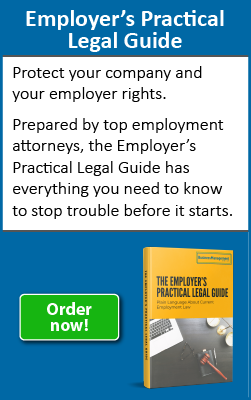Workplace bullying emerges as new employment law issue
When faced with an abusive, intimidating boss or co-worker, many workers’ thoughts go back to the schoolyard where they first might have encountered a bully. While workplace bullying certainly has existed for as long as mean people have worked alongside others, only recently has it emerged as an issue for the courts to handle.
As awareness of “workplace bullying” arises, so does potential litigation and liability for employers.
Yet the law often has a hard time addressing workplace bullying—in many ways it’s a problem in search of a solution. No specific federal or Texas “anti-bullying” legislation exists, but employers still may be liable for bullying behavior.
While bullying seldom is motivated by a victim’s race, ethnicity, sex, age or disability, employees who sue over abuse often bring harassment claims alleging violations of Title VII of the Civil Rights Act, the Age Discrimination in Employment Act, the ADA or the state counterparts of those federal laws. Others sue under common law torts—most often the intentional infliction of emotional distress.
Legal consequences of bullying
The most dramatic example of an incident in which workplace bullying led to litigation occurred in 2001 in Indiana. The plaintiff in the case not only made bullying the centerpiece of the lawsuit, but also called in a bullying expert to testify.
Dr. Daniel Raess, an Indiana heart surgeon, apparently yelled too many times at perfusionist Joseph Doescher. (A perfusionist operates a heart/lung machine during surgery.) According to evidence offered at trial, Raess allegedly yelled at Doescher following an operation, saying he was “history” and charging toward him with a clenched fist. Doescher recalled fearing that Raess was about to “smack the s___ out of him.” Doescher later resigned, complaining that the incident caused him to experience depression, anxiety, loss of sleep and loss of appetite.
He brought suit against Raess for assault, intentional infliction of emotional distress and intentional interference with his employment relationship.
Bullying: a cause celebre
Anti-bullying forces mobilized to make this case their budding movement’s cause celebre. Doescher’s attorney used the term “bullying” in his opening statement: “This is the story of the ruination of a 17-year career of a perfusionist by Dr. Raess because of a workplace bullying incident.”
The case also marked the first time that Gary Namie, the founder of the Workplace Bullying Institute, was allowed to testify in court on his specialty, over the objections of the defense. Namie testified that the 2001 incident was an “episode of workplace bullying” and that Raess is “a workplace abuser.”
The jury returned a verdict for the plaintiff for $325,000.
In a newspaper story following the verdict, Namie emphasized the case’s importance, claiming, “This is the first time a workplace bullying case has been heard in the United States.”
Although obviously helpful at trial, Namie’s testimony came back to haunt the plaintiff when it became the basis for an appeal’s court reversal (Raess v. Doescher, 858 N.E.2d 119, Ind. Ct. App., 2006). According to the Indiana Court of Appeals: “The following issue is dispositive: whether the trial court committed reversible error in allowing a witness to label Raess a ‘workplace bully.’” Clearly the court felt it did, and overturned the original jury’s award to Doescher.
Notwithstanding the favorable outcome for Raess in the appeals court, the media and public awareness this case created for workplace bullying could potentially have an enormous impact on employers.
Almost every employer maintains that its people are its most important assets. It pays to give that ideal more than lip service and take steps to minimize workplace bullying.
Taking an example from my own profession, Aric Press, editorial director of The American Lawyer publications, had this to say in an editorial about workplace bullies:
“Partnership and brilliance have their privileges. And, to their credit, most lawyers seem to manage a decent politeness even under stress. Which only makes the outliers seem worse. At a minimum, what I’m suggesting is that you ask yourselves this question: Why do we put up with this behavior? If the answer is 2,500 value-billed hours, at least you will have identified your priorities without incurring the cost of a consultant.”
In your workplace, the bully may be your most creative person, the best salesperson or the brilliant technical genius. But if that individual is terrorizing your work force and you continue to tolerate that behavior, then you have clearly established your priorities.
Apply the ‘No jerk’ rule to your workplace
There is a concerted effort to make bullying another wrongful employment practice. A model bill, the Healthy Workplace Act, has been introduced in more than a dozen state legislatures. To protect themselves, employers must recognize workplace bullying and know what to do to minimize the present and future risk.
Three steps that employers can take:
- Make sure your policies prohibit all harassing, abusive and violent conduct.
- Quickly respond to any complaint of improper behavior—even if it is not technically illegal—in the same way as you respond to a complaint of harassment based on a protected category.
- Most important, make sure your actions are aligned with your words.







